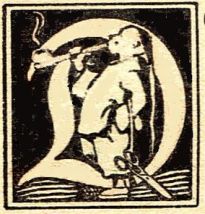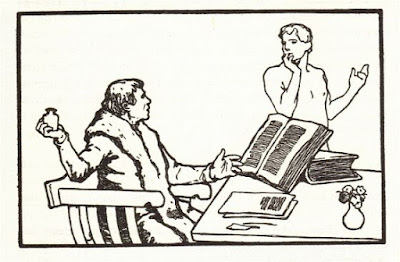Karl (Rudolf Gustav) Mühlmeister (1876 - 1942 ?1945) war der Sohn des aus Detmold stammenden Zeichners und Lithographen Wilhelm Mühlmeister und dessen Frau Wilhelmine Brühling.
Der hochbegabte Maler und Illustrator war bis zu seinem Lebensende in
München tätig und Mitglied des Süddeutschen Illustratorenbundes.
"Karl Mühlmeister war sicherlich einer der produktivsten und talentiertesten Illustratoren von Kinder-und Jugendliteratur in Deutschland im frühen 20. Jahrhundert. Es handelt sich um Entwürfe und Aquarelle zu Märchen, Sagen und Abenteuergeschichten wie Lederstrumpf von James Fenimore Cooper, oder andere Kinder-und Jugendliteratur wie Johanna Spyris Heidi. Mühlmeister arbeitete in München, bis um 1942 und war Mitglied der "Süddeutschen Illustratorenbund". Das Datum seines Todes ist leider unbekannt. Was bleibt, ist sein Werk, und vor allem seine Aquarelle sind von einer faszinierenden zarten Schönheit. ... Mühlmeister's leuchtend farbige Landschaften zaubern die Atmosphäre des ganzen Bildes, sie sind "Stimmungslandschaften", in dem die Protagonisten agieren, nehmen Sie die Geschichten statt. Auch wenn die dargestellten Personen oft sehr klein sind im Gegensatz zu ihrer Umgebung, sie sind nicht nur Zweck (wie von der Tradition der Landschaftsmalerei bekannt), sondern ebenso wichtig wie die Landschaft selbst: sie bilden ein einheitliches Ganzes, das Einblick gibt in die magisch-fiktive Welt der dargestellten Geschichte." Aus:http://www.detlef-heinsohn.de
Karl Mühlmeister was certainly one of the most productive and talented
illustrators of children's literature in Germany in the early 20th
century. There are designs and watercolours to fairy tales, sagas, and
adventure stories such as The Leatherstocking Tales by James Fenimore Cooper, or other children's literature like Johanna Spyri's Heidi.
About the artist himself is unfortunately very little known. He was born in Hamburg in 1876, lived and worked in Munich until around 1942 and was a member of the "Süddeutsche Illustratorenbund". Where he studied and who his teachers were, is as unknown as the date of his death. What remains is his work, and especially his watercolours are of an intriguing delicate beauty. I am rather convinced that there might have been an influence by the work of Willy Pogány (1882-1955) whose watercolours show a similar concept of landscape and understanding for colours.
Mühlmeister's luminously coloured landscapes conjure up the atmosphere of the whole picture, they are "Stimmungslandschaften" in which the protagonists act, the stories take place. Even though, the depicted persons are often rather small in contrast to their surroundings, they are not for accessory purpose only (as known from the landscape painting tradition) but are as important as the landscape itself: they form a unified whole that gives insight into the magical-fictive world of the illustrated story.
About the artist himself is unfortunately very little known. He was born in Hamburg in 1876, lived and worked in Munich until around 1942 and was a member of the "Süddeutsche Illustratorenbund". Where he studied and who his teachers were, is as unknown as the date of his death. What remains is his work, and especially his watercolours are of an intriguing delicate beauty. I am rather convinced that there might have been an influence by the work of Willy Pogány (1882-1955) whose watercolours show a similar concept of landscape and understanding for colours.
Mühlmeister's luminously coloured landscapes conjure up the atmosphere of the whole picture, they are "Stimmungslandschaften" in which the protagonists act, the stories take place. Even though, the depicted persons are often rather small in contrast to their surroundings, they are not for accessory purpose only (as known from the landscape painting tradition) but are as important as the landscape itself: they form a unified whole that gives insight into the magical-fictive world of the illustrated story.
Frontispiz
Aladdin und die Wunderlampe
Die Geschichte vom kleinen Buckligen
Hassan der Seiler
Das Orakel des Scheichs
Sindbad der Seefahrer
Die neidischen Schwestern
Geschichte Königs Agibs des Einäugigen
Das Zauberpferd
Asem und die Geisterkönigin

Prinz Achmed und die Fee Paribanu
Der Oliventopf
Wie man anhand der unten abgebildeten Buchdeckel sieht, schuf Mühlmeister neue Deckelbilder für die verschiedenen Buchausgaben.
Es ist erstaunlich, dass trotz der zahlreichen Buchillustrationen von Karl Mühlmeister keine Fotos des Künstlers zu finden sind. Wahrscheinlich wurden diese Dokumente im Bombenhagel des Zweiten Weltkrieges vernichtet.
Weiteres Material über von Mühlemeister illustrierte Bücher findet man unter:






























































